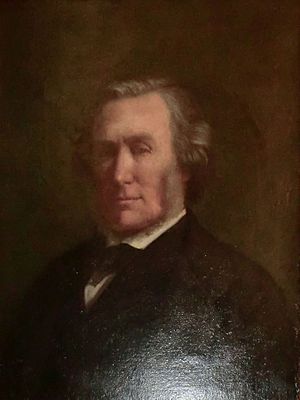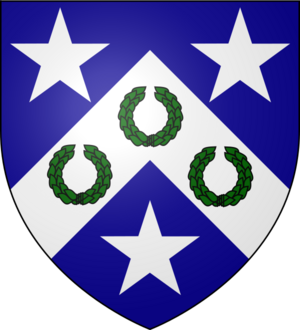Sir Benjamin Collins Brodie, 2nd Baronet facts for kids
Quick facts for kids
Sir Benjamin Collins Brodie, Bt
|
|
|---|---|

Portrait, initialled and dated: "E.A. 1874"
|
|
| Born | 15 March 1817 |
| Died | 24 November 1880 (aged 63) St Clare, Isle of Wight, England
|
| Nationality | British |
| Alma mater | Balliol College, Oxford University of Giessen |
| Known for | Analysis of beeswax, work on peroxides |
| Awards | Royal Medal (1850) |
| Scientific career | |
| Fields | Physical chemistry |
| Institutions | University of Oxford |
| Academic advisors | Justus von Liebig |
| Doctoral students | Augustus George Vernon Harcourt |

Sir Benjamin Collins Brodie, 2nd Baronet (born February 5, 1817 – died November 24, 1880) was an important English chemist. He is known for his work on beeswax and his studies of peroxides. He also explored different forms of carbon.
Contents
Early Life and Education
Benjamin Collins Brodie was born in London, England. His father, also named Benjamin Collins Brodie, was a famous doctor. Young Benjamin went to Harrow School, a well-known school. After that, he studied at Balliol College, Oxford University. In 1838, he earned a good degree in mathematics.
Studying Chemistry in Germany
Brodie became very interested in chemistry. He traveled to Giessen, Germany, to study with a famous chemist named Justus von Liebig. While there, he worked with another chemist, Alexander William Williamson. Brodie did special research on beeswax. This work was so good that he became a member of the Fellowship of the Royal Society in 1849. He also won the Royal Medal in 1850 for his discoveries.
Key Scientific Work
Brodie did important research in his own laboratory. He taught chemistry to Nevil Story Maskelyne there. He was also a leader in the Chemical Society. He served as its secretary from 1850 to 1854. Later, he became its president in 1860.
Research on Peroxides and Carbon
One of Brodie's main areas of study was peroxides. These are chemical compounds that contain a lot of oxygen. He also made important discoveries about different forms of carbon. He found something called graphitic acid. This helped scientists understand how carbon can exist in various states, like diamond and graphite.
Brodie's View on Atomic Theory
Interestingly, Brodie did not agree with the atomic theory that was popular at the time. This theory said that everything is made of tiny, indivisible particles called atoms. In 1866, he created his own idea called the "Calculus of Chemical Operations." He thought this was a better way to explain chemistry without using atoms. He even joked that atomic theory was like "joiner's work" (meaning simple carpentry) because it used models with balls and wires.
Later Career and Family Life
In 1865, Brodie became a professor at Oxford University. He held the title of Waynflete Professor of Chemistry until 1872. This was a big achievement, even though some people at the university disagreed with his views on religion.
Family and Legacy
Brodie married Philothea Margaret Thompson in 1848. They had one son and five daughters. He passed away in November 1880 at the age of 63. His only son, also named Benjamin, took over his family title. Lady Brodie died two years later in 1882. Brodie's work helped advance the field of physical chemistry.

